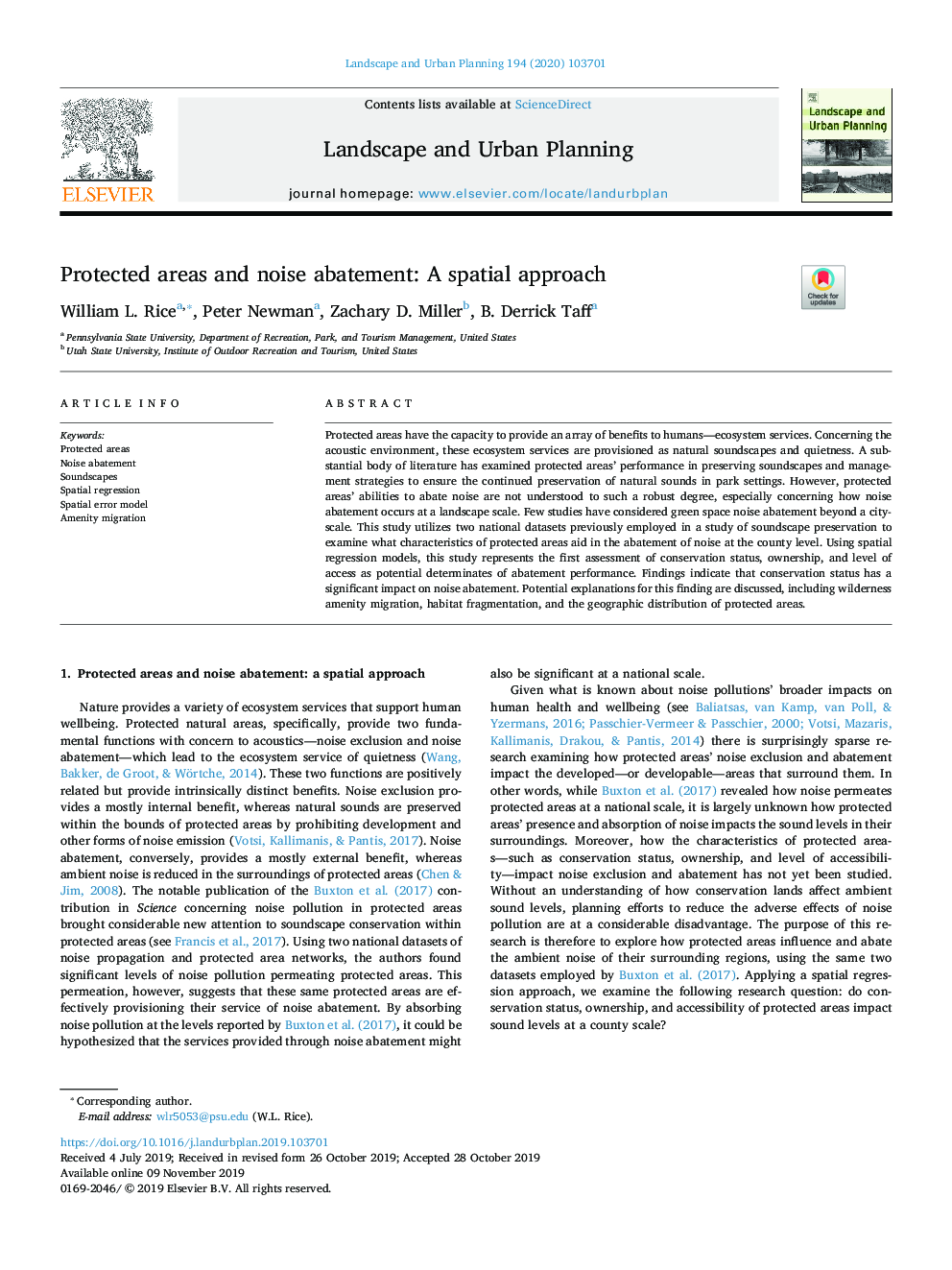| Article ID | Journal | Published Year | Pages | File Type |
|---|---|---|---|---|
| 13465833 | Landscape and Urban Planning | 2020 | 9 Pages |
Abstract
Protected areas have the capacity to provide an array of benefits to humans-ecosystem services. Concerning the acoustic environment, these ecosystem services are provisioned as natural soundscapes and quietness. A substantial body of literature has examined protected areas' performance in preserving soundscapes and management strategies to ensure the continued preservation of natural sounds in park settings. However, protected areas' abilities to abate noise are not understood to such a robust degree, especially concerning how noise abatement occurs at a landscape scale. Few studies have considered green space noise abatement beyond a city-scale. This study utilizes two national datasets previously employed in a study of soundscape preservation to examine what characteristics of protected areas aid in the abatement of noise at the county level. Using spatial regression models, this study represents the first assessment of conservation status, ownership, and level of access as potential determinates of abatement performance. Findings indicate that conservation status has a significant impact on noise abatement. Potential explanations for this finding are discussed, including wilderness amenity migration, habitat fragmentation, and the geographic distribution of protected areas.
Keywords
Related Topics
Life Sciences
Agricultural and Biological Sciences
Ecology, Evolution, Behavior and Systematics
Authors
William L. Rice, Peter Newman, Zachary D. Miller, B. Derrick Taff,
